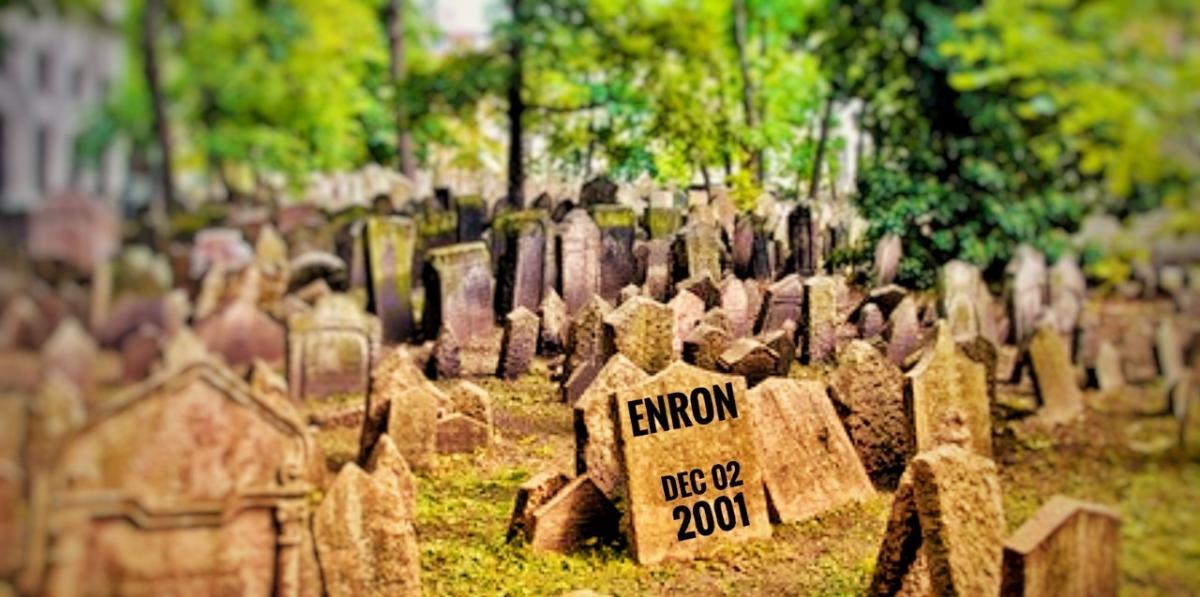By Bill Kelly, CAIA Association CEO
A requiem is a solemn chant for the repose of the dead. Chant-worthiness when it comes to the Enron Corporation is still subject to much debate depending, of course, upon which side of that trade you were on as the company slipped into bankruptcy on this day in 2001. The rise (and subsequent fall) of this energy conglomerate was spectacular in every way. The highest of highs saw a company, born in 1985, rise to become the largest seller of natural gas in North America just seven years later. The 1990s bore witness to a stock price that grew by more than 300% through the end of 1998 and experienced an even greater expansion in the next two years resulting in a further trebling of the stock price from there. By the end of 2000, the company had a market cap of $60B and was trading at 70 times earnings. Even as late as September of 2001, after the unexpected resignation of the CEO Jeff Skilling (who maybe just wanted to spend more time with his family!), less than 2% of the total Enron shares outstanding were held short…just weeks later it would become the largest bankruptcy in US history.
What should this inauspicious anniversary harbinger for today’s investor? When it comes to fraud, hopefully the answer is less to worry about as the collapse of Enron gave us Sarbanes Oxley, the PCAOB, and new corporate governance proposals for publicly listed companies. Still, none of this solved for the dreamy optimism that defines many investors who continue to believe that they can always perfectly time a market top. Fraud aside, it might be sensible to mark this anniversary with a stern conversation with yourself about late cycles and playing some offense by being more defensive.
The October 2019 issue of CAIA Association’s Alternative Investment Analyst Review provides the perfect opening to begin that discussion in Positioning for Late Cycle with Defensive Equity. The risk-on trade needs very little introduction and the sentiment that the end is near is real and brought to us by increased bouts of volatility, liquidity shocks, and elevated geopolitical risks. Yet, low unemployment, corporate earnings growth, and a willingness for central banks to signal that they are the ultimate stop-loss providers, suck most of us back in with both feet. What if there was a way to continue to participate in some of the upside capture from here, but to also have asymmetric exposure to reduce the likelihood of a catastrophic drawdown?
The paper goes on to look at a simulated defensive equity multi-factor (DEMF) portfolio and it is interesting to see what you can learn about such a construct when viewed through the dot-com era, the narrowness of certain market cycles, and the inherent late-cycle risks of cap-weighted indices. A timely read at a very interesting point in the capital markets.
Ultimately, risk never goes away. It can be levered, transferred, mitigated, or in the case of Enron, simply off-loaded to the greater fool. The smart money continues to treat risk as an asset, remains diversified and fully invested, and pounces when most among us are flashing panic. What will your investment tombstone say about you?
Seek diversification, education, and know your risk tolerance. Investing is for the long term.
Bill Kelly is CEO of CAIA Association. Follow Bill on LinkedIn and Twitter.




